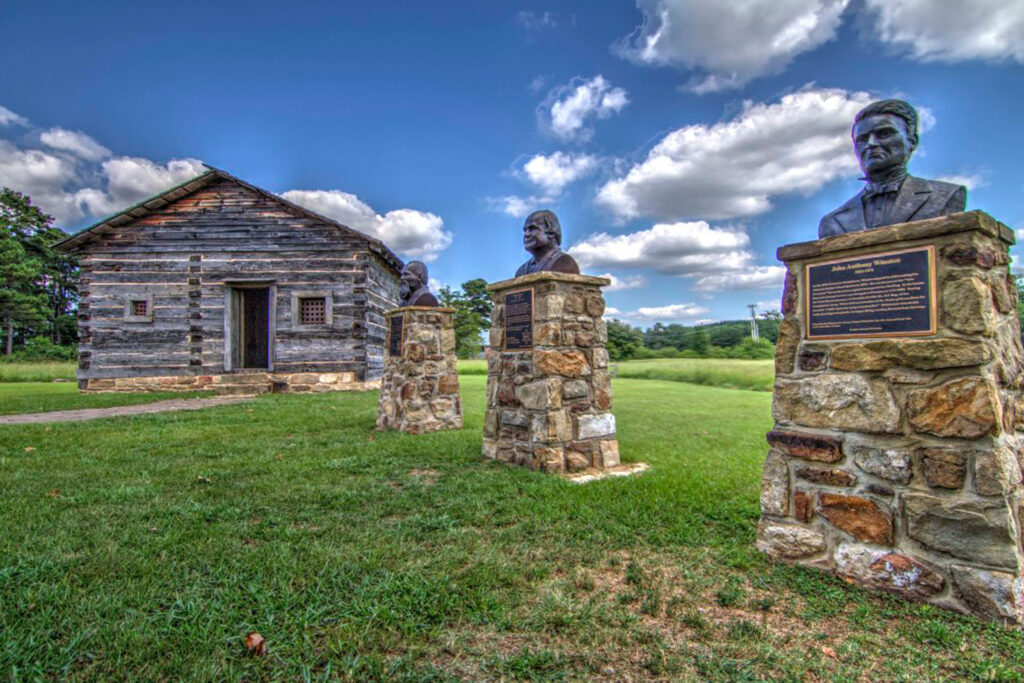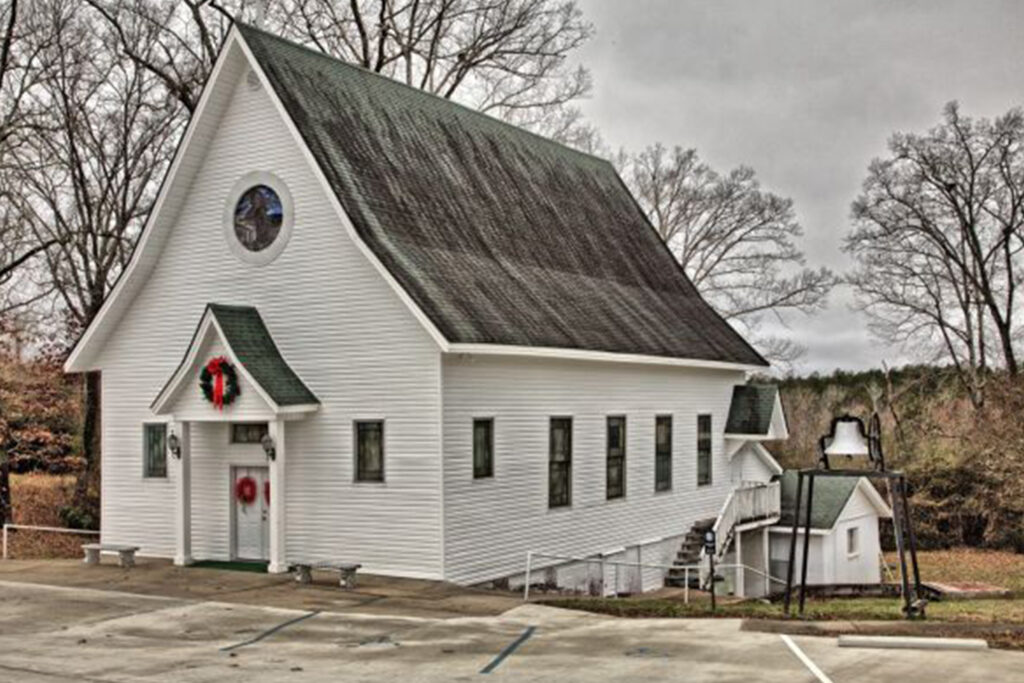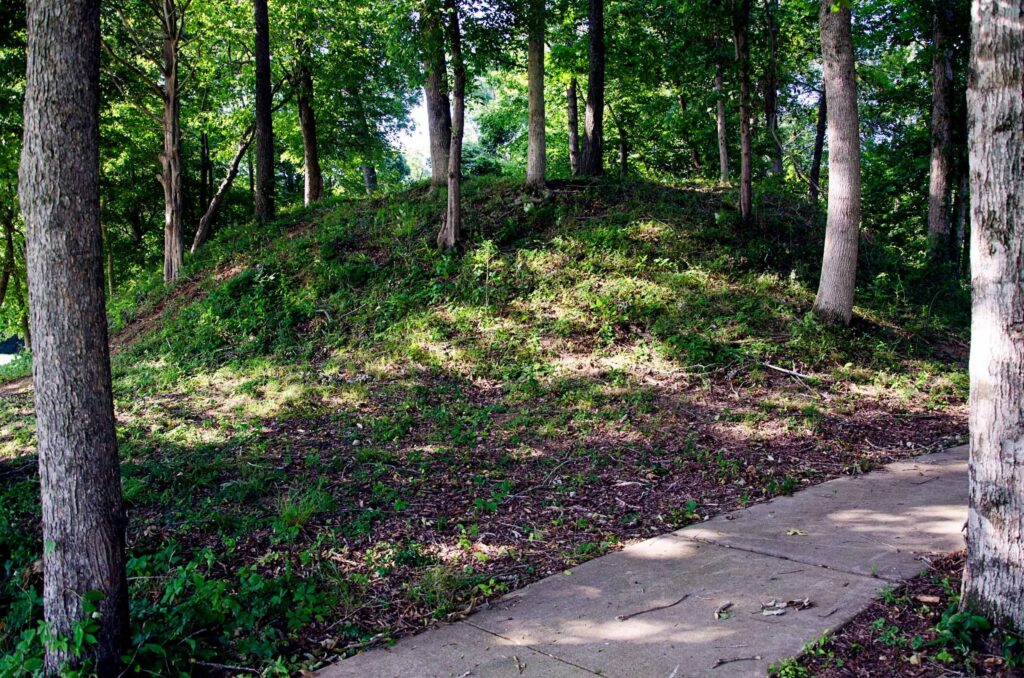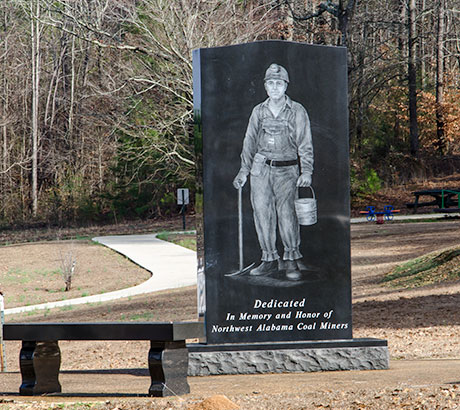Alabama's I-22 Region
36 hours in the I-22 Region
There’s magic coursing through the towns, the people, and the nature of Alabama’s Lamar, Fayette, Marion and Winston counties. The hardworking people who call this region home find joy in each other and the beautiful moments they create in a place where it’s easy to feel like you belong.
A rich slice of Americana steeped in nostalgia.
Alabama’s I-22 Region has a deep and diverse history, from the Indigenous peoples who built mounds as centers of cultural activity, to the families split in the Civil War, and the coal miners who found some of the best domestic seams available in the United States.
When driving down the roads and in towns of Alabama’s I-22 Region, you’re hit with a wave of nostalgia. With over 25 sites on the Alabama Register of Landmarks & Heritage, this region has history dancing through its charming streets.
Take a walk-through history from Native American settlers to the first emergency call in the nation. This tour takes you county by county and shares some interesting stories and facts about our state and region – we’ve sprinkled in some did you know facts to give you an edge during your next trivia night to impress your friends and family!
On the eve of the Civil War, Winston County caught national attention, as many citizens petitioned to break away from Alabama completely. “The Free State of Winston” is a popular name given to Civil War-era Winston County, as a reflection of the county’s generally pro-Union stance and resistance to Confederate rule during the war. During the secession crisis, Unionists in Winston County declared their right to secede from Alabama; much as the state seceded from the Union. Although the county pulled back from the bold step of secession and hoped to remain neutral in the conflict, it remained under state control and was the scene of violent acts of retribution during and after the war. While here visit Double Springs to see the Dual Destiny statue that honors both Union and Confederate sympathizers as both were well represented in the county. Perhaps you have heard about the Incident at Looney’s Tavern, a fact-based musical drama about events in Winston County following the 1861 Alabama Secession Convention in Montgomery.
Be sure to stop by the Houston Jail in Winston County, Alabama, the only surviving log jail in north Alabama and the second-oldest log jail in the nation. Constructed around 1868 from hand-hewn hardwood logs with nails to prevent prisoners from sawing their way to freedom, the jail replaced an earlier one destroyed during the Civil War. The jail has two rooms. Sanitary facilities were small holes in the back wall. When the county seat moved to Double Springs following the formation of Cullman County in 1884, the old jail was abandoned.

The First 9-1-1 Call came from Haleyville and it became the first municipality to answer an emergency 911 call after AT&T reserved the digits 911 nationwide. The Haleyville Area Chamber of Commerce and the town come together each year to host a two-day festival to celebrate the town’s role in making the first 911 call and to honor law enforcement and emergency personnel. Before leaving Haleyville, be sure to stop by Byler Road, Alabama’s first state road that was considered “the Main Street of Northwest Alabama.”


The North Alabama Hallelujah Trail features 32 churches that are at least 100 years old, stand on their original sites, still hold services, and are accessible to the public. The Corinth Church in Winston County, was organized and joined in 1884. It has been completely restored to its original appearance, has no power or water and only an outhouse for a restroom. Services are still held there early on Sunday mornings. The Church of the Forest organized under its first name of Grayson. In 1952 the church was given its current name, “Church of the Forest” due to its beautiful surroundings. In Marion County, the Hamilton Methodist Church was established in 1868 formerly called Toll Gate. The Brilliant Methodist Church located on Main Street remains a cornerstone of the town. Build in the early 1920s by local coal miners, it still holds weekly services.
Alabama is home to one of the densest concentrations of ancient Native American monumental architecture in all of North America. Some of these sites were rivaled in size and complexity only by cities built by the ancient civilizations of Central and South America, as well as the contemporary cities of medieval Europe.
The Hamilton Mounds site is the largest Indigenous mound site in Marion County. The site includes three mounds along the left bank of the Buttahatchee River. Archaeologists believe the mounds were built during the Early Mississippian period when people were transitioning to new ways of life and using new tools and manufacturing techniques for pottery.


The Fayette Depot Museum is located in the restored, historic train station that was constructed in 1887. The museum displays many local, historical artifacts from eras past, including a Civil War-era drum, an extensive collection of flags and a train track with model trains.
Continuing with the tour of historic churches in the area, visit the Berea Church of Christ historic marker. Berea was one the oldest and largest church in the area, and many congregations were started by members of Berea Church. A visit to Old City Cemetery, a beautifully-maintained and tranquil historic site includes Civil War graves.
Before heading to Marion snap a selfie with the Mining, Logging and Agriculture Mural in Berry for a visual of the agricultural history in Fayette County and use #SweetHomeMurals.
The Coal Miners’ Memorial Marker pays homage to the rich coal mining history of the area as the town of Brilliant was built around the coal mining industry in the late 1800’s. The large coal reserves in the area sparked railroad construction and industrial development throughout Alabama. The railroad is the reason the City of Guin came into existence.
Head to the Pastime Theatre in Winfield. Built in 1937, the pre-Civil Rights building still tells the story of Alabama’s segregated past. Call to schedule a tour and learn more about the theatre’s history.
Be sure to visit the Jackson Military Road, named for Gen. Andrew Jackson. During the War of 1812 and the Creek War of 1813-14, Jackson and his federal troops traveled across much of what was then known as the Old Southwest, including present-day Alabama, as they fought both the British Army and Native Americans.
Next, head to Lamar County and visit a historic structure of interest, the Moore-Hill House constructed in 1834, also known as the Old Stagecoach Inn. This is a private historic home located near present-day Sulligent. The home’s first occupant was James Moore, a veteran of Andrew Jackson’s army in the Creek War, and his family. According to legend, the Moore-Hill House was used in spring 1889 as a hiding place by noted train robber Rube Burrow, who was the subject of a manhunt.
Rose House Inn
325 2nd Avenue NW
Fayette, AL 35555
Days Inn by Wyndham
1849 Military St S
Hamilton, AL 35570
Vernon Motel
44554 HWY 17
Vernon, AL 35592
Hidden Cove RV Outdoor Resort
687 County Road 3919
Arley, Al 35541
Charles Cafeteria and Grill
226 2nd Avenue NE,
Fayette, AL 35555
Eagle Rock and Grill
17628 Highway 18 E
Berry, AL
Happy Days Café
525 Front Street
Sulligent, Al 35586
Elie Mae’s Café
2406 US Highway 43
Winfield, AL 35594
Dixie Den
907 20th St
Haleyville, AL 35565